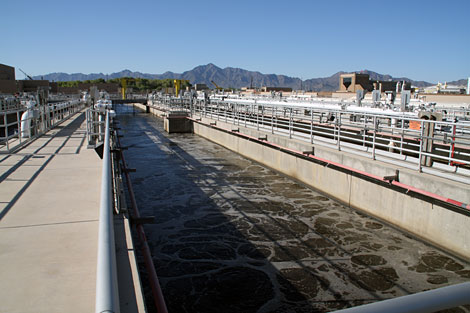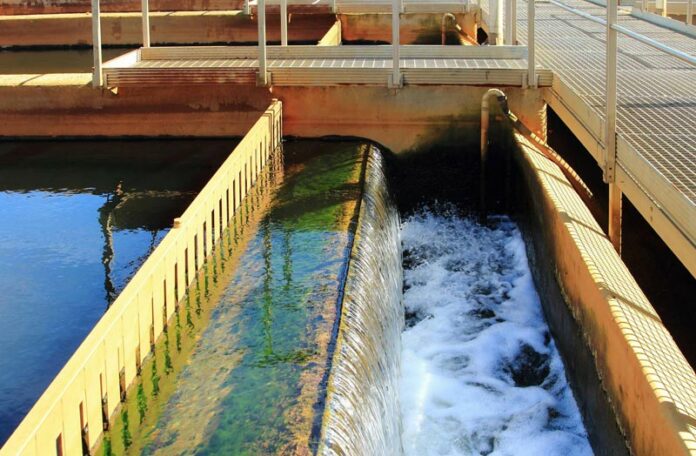Water reclamation is the treatment of wastewater to make it reusable.The testament is used to make it reusable, while ‘wastewater reuse’ is the use of treated wastewater (or reclaimed water) for a beneficial purpose. In addition, ‘reclamation’ or ‘reuse’ of water frequently implies the existence of a pipe or other water conveyance facilities for delivering the reclaimed water. Water quality requirements for reuse alternatives vary extensively depending on the extent of potential public exposure and, as a consequence, wastewater reclamation costs are usually not well-documented, calculated or, even, known. Water entering the reuse cycle begins its journey either in potable form or in non potable form. Focusing study on developing countries like India, these are characterised by a severe water imbalance. In countries like India, there are many coastal and southern regions where there is a severe pressure on freshwater resources, due to low and seasonally uneven precipitation and high run-off. In some cases this is exacerbated by especially high demand from tourism and agriculture. The main reasons are very high population density and low to medium precipitation.
On the other hand, there are major losses from water delivered to agriculture for irrigation and domestic consumption. There are many countries in the world and many different approaches have been developed for water recycling regulations and guidelines to provide effective measures to protect against risk to public health and the environment. Clearly economics is a key factor in the choice of philosophy. Countries like India, should adopt an approach which leads to conservative high technology/high cost/low risk guidelines or regulations of which water recycling regulations are the best known examples. We need to be endeavoured to follow this regulatory approach to guidelines, but have not always achieved low risk in practice because of insufficient money, experience or regulatory controls. Limits of affordability have led some developing countries to follow the low technology/low cost/controlled risk path of the attributable risk approach that is embodied in the World Health Organisation (WHO) Guidelines.

Current Situation on Wastewater Reuse in India
The use of wastewater for irrigation is a way of disposing urban sewage water with several advantages. Recycled water can be cost-effective means of supplying nutrients for agricultural irrigation and of possibly avoiding the need for nitrogen removal at wastewater works in sensitive areas. Furthermore, sewage water is an alternative water source in arid and semi-arid areas where water is scarce. Besides these advantages, wastewater can contain heavy metals, organic compounds and a wide spectrum of enteric pathogens which have a negative impact on the environment and human health.
Wastewater reuse can be a matter of choice in general water management strategy. Worldwide, wastewater reclamation and reuse is estimated to represent a potential extra water resource amounting to approximately 15% of existing water consumption. On a local basis this proportion can be significantly higher. In view of the increasing pressure on all water resources, both in industrialized and in developing countries, supplementing water resources with reclaimed wastewater cannot longer be neglected.
It is characterised by the low level and irregularity of water resources, both through time and through space. The strong growth in urbanisation, tourism, irrigation and population can only increase tensions in many countries and regions where consumption has already reached the amount of available resources.
The renewable water resources are very unequally shared across the country. Many parts of the country are facing increasingly more serious water shortage problems. Some of them have few naturally available fresh water resources and rely mainly on groundwater. Surface waters are already in most cases utilized to their maximum capacity.
Groundwater aquifers are often over-drafted and sea and brackish water intrusion in coastal areas has reached threshold limits in some locations. Non-renewable deep or fossil aquifers are being tapped to varying degrees. The exploitation of non-renewable resources are intensive. Desalination of brackish and seawater is already under implementation or planned in some parts of the country despite its high cost. National exploitation ratios over 50%, or even nearing 100% in several parts of the country show that actual water consumption already exceeds the renewable conventional water resources. As a consequence, several problems appear all around the basin such as water and soil salinization, desertification, increasing water pollution and unsustainable land and water use.
Water recycling and reuse is meant to help close the water cycle and therefore enable sustainable reuse of available water resources. When integrated to water resources management, water reuse may be considered as an integral part of the environmental pollution control and water management strategy. It may present benefits to public health, the environment and economic development. Recycled water may provide significant additional renewable, reliable amounts of water and contribute to the conservation of freshwater resources.
Wastewater reclamation involves the treatment or processing of wastewater to a quality level acceptable for reuse. Wastewater reuse may be direct or indirect. Direct wastewater reuse involves a direct link between reclamation and processing.It may also contribute to desertification control and desert recycling. Other social and economic benefits may result from such schemes such as employment and products for export markets. It is, however, essential that the development of reuse prevents negative effects on the environment and public health. Adequate treatment has therefore to be provided for the intended reuse.

Need for Wastewater Reclamation and Reuse
The development of wastewater reclamation and reuse in many countries is related to looming water scarcity, water pollution control measures and protection of the aquatic environment. There is also the need to obtain alternative water resources for a growing population. In cities and regions of developed countries, where wastewater collection and treatment have been the common practice, wastewater reuse is practiced with proper attention to sanitation, public health and environmental protection.
Countries like India, need to make a stringent policy; specially mention the cost of water and charges for water use. Securing adequate supplies of a resource for which demand is continuously increasing is one of the drivers behind what is arguably one of the policy´s most important innovations: the introduction of an economic analysis of water use within river basins and an obligation to charge for recovery of costs for water services.
Water must be priced and users must make adequate contributions to the costs of using water, divided at least into industrial, agricultural and household users. The requirement for a detailed economic analysis of the cost of water use will also create new incentives for changes by exposing the real figures for investments, running costs, environmental impact and for the distribution of the costs between user groups for water use.
Water reuse has recorded indisputable progress in recent years in the many regions of the country. Some concrete recent noteworthy examples can be pointed out in some regions of the country, both nationally and locally. These examples show the considerable benefits of wastewater reuse. These benefits are both financial (savings in very costly heavy infrastructures), economic and social (wastewater reclamation and reuse processes, if they are well managed, may for example allow agricultural incomes to be improved and give better access to water for the least well-off) and environmental (reducing pressure on, and even restoring, ecosystems and resources).
Since the plant has been in operation, the effluent is being used for irrigation of 250 hectares of agricultural land. The treated water is also used by the hotels, International Airport and Municipality for the irrigation of gardens, parks and fields during the summer season. For that purpose, the effluent is being discharged through pumping stations.
The recent development of new treatment processes, such as membrane bioreactors (ultrafiltration, microfiltration), to obtain very high quality purified water, disinfected and with no suspended solids, could change the approach to the problem and could open the door to recycling for domestic purposes (cleaning, toilet flushing, etc.). The reuse of industrial wastewater after purification to supply cooling water, wash water or even process water after sophisticated complementary treatment is widely developed in the country.
Even though municipal wastewater treatment plants were designed for towns, only few were completed and became operational. The construction of the other plants was also completed but has not been put into operation. The many plants are located at the lowest part of the area adjacent to existing open channels in order to reduce pumping needs.
Most of the towns are equipped with sewerage networks, frequently collecting industrial effluent. However, out of the largest towns only few have good wastewater treatment plant infrastructure, rest both their design and operation are considered to be insufficient. As a consequence, most of the wastewater produced by the towns is to be used to irrigate crops after insufficient or even no treatment. The reclaimed water can be used in irrigation of golf courses by sprinkling.
The reuse of treated wastewater from housing, municipalities, industry and commercial enterprises. The main objective is to reuse all treated wastewater to improve the water balance and the ground water quality as well as protecting soil and the public health. There will not be any adverse impacts in terms of soil or groundwater quality degradation.
Conclusion
In many communities around the world, the growth of populations and economies are causing demand for freshwater to increase at an alarming rate. Without a sound and sustainable strategy for integrated water resource management (IWRM), demand in these areas can quickly expand to exceed available supply. The increasing scarcity of water in the world along with the rapid population increase in urban areas is the reason for concern and the need for appropriate water management practices. Inadequate investment has been made in the past on sewage treatment facilities; water supply and treatment often received more priority than wastewater collection and treatment. However, due to the trends in urban development, wastewater treatment needs greater emphasis.
Authored by

Author bio;
The author is working as Water Management Consultant for 6 years, in Arup Group.. He is An M. Tech from Central Scientific Instruments Organisation Chandigarh and a researcher at TalTech Tallinn University of Technology.

